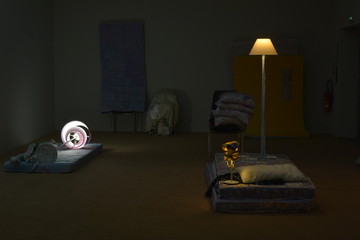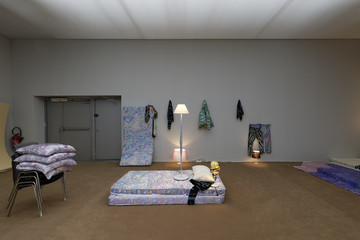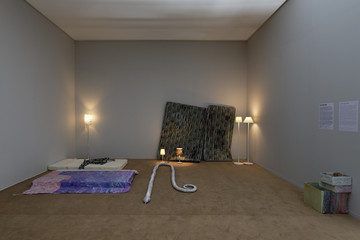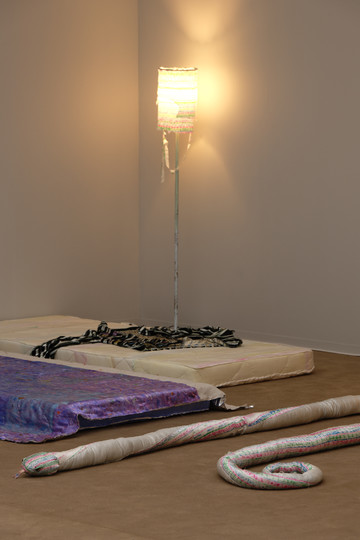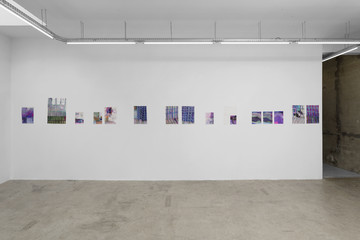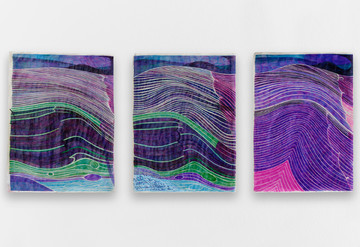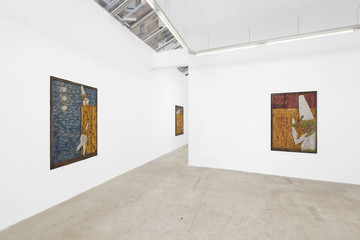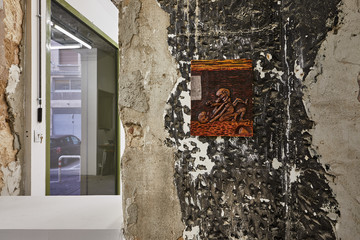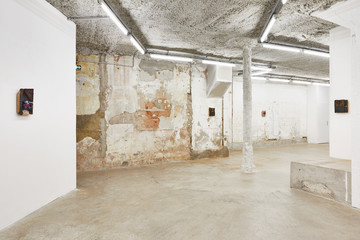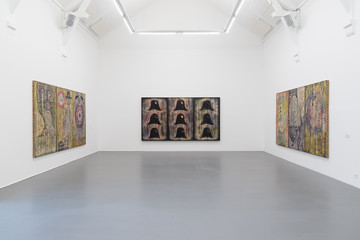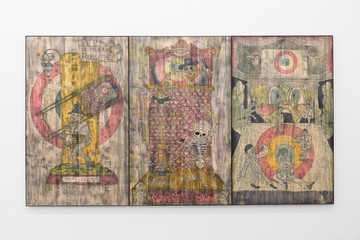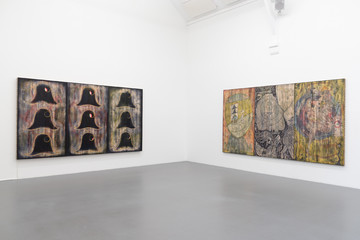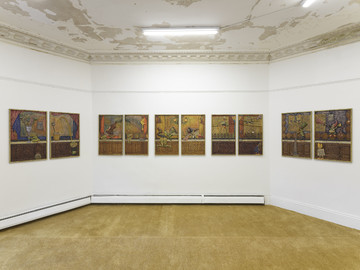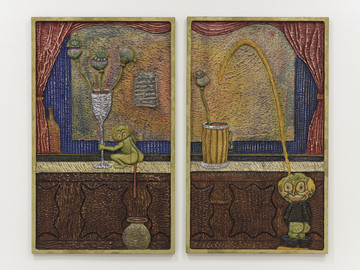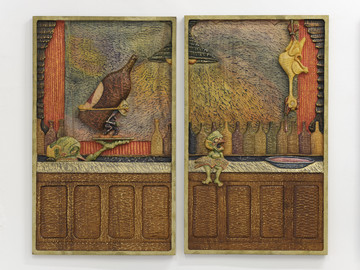My practice is inhabited by elective affinities that make up the fictional community in which I work. Let’s say I’m a language interspeciesist with a slightly perverse bent. I address someone with something in order to secretly talk to someone else.
Anne Bourse
Anne Bourse was born in 1982 in Lyon. She lives and works in Paris. What remains in mind from her work are swirling lines and letters, something like burlesque cartoons or psychedelic frescoes that invade the surfaces of books, garments and papers of all types. But even though her practice is varied across different media, including painting, drawing, but also textiles or textual productions, it is above all rhythmed by the continual motion of a writing of the self.
Franck Balland, FUTURE, FORMER, FUGITIVE, A French scene, Magazine of the Palais de Tokyo.

Ink, silk dye, ballpoint pen, water marker, acrylic paint, digital print, silk, acrylic velvet fabric, foam, pillow, lampshades
190 × 90 × 170 cm

Felt-tip pen, pencil, typex and ballpoint pen on coated paper
47 × 32 cm (57 × 42 framed)
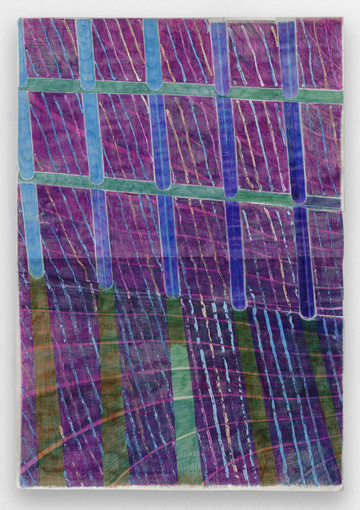
Felt pen, typex and ballpoint pen on coated paper
46 × 32 cm (56 × 42 cm framed)
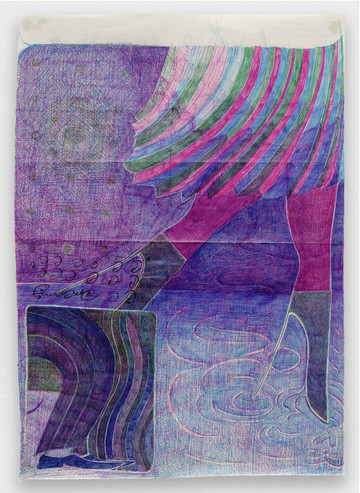
Felt pen and ballpoint pen on coated paper
42 × 30 cm (52 × 40 cm framed)
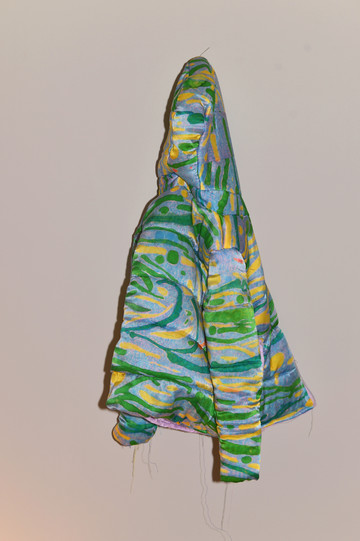
Ink on silk, hand-sewn anorak
70 × 35 cm
Self-portrait imposed itself by default. my own caricature and cross-dressing became a form of expression, my chaplin-like “thing”, that of a hybrid character, both staged and real. In the beginning, I used to come dressed as a clown to openings, just as a garment, and sometimes it was for performances, like at the inauguration of the clown shoe shop whose façade I renovated. I used this figure as a criticism even of his employment, because the clown is historically this ambiguous character, both servant of the state that he amuses and servant of the people who mock the power.
Mathis Collins
Mathis Collins develops a practice mingling sculpture, performance and poetry. He works around popular objects and artisanal practices whose catalogue of forms he reinvests via collective experience and an absurdist approach. He alternates exhibition projects and workshops, thus placing collective creation at the heart of his practice.
Through his work, he questions the artist’s responsibility in a carnival society, torn between brutal individualism and the fantasy of a popular collectiveness, in which power has been transmuted into a show. He thus evokes, with a large dose of self-criticism, the place of the artist in the world of art itself in which the roles of puppets and puppet-masters seem to be constantly redistributed.
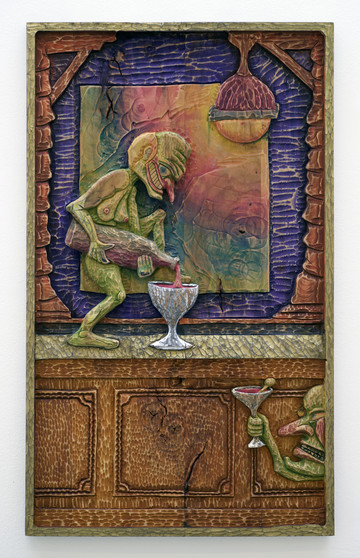
Lime wood, pigments
90 × 54,5 cm
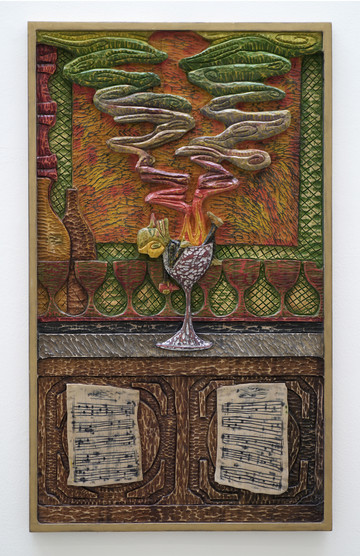
Lime wood, pigments
90 × 54,5 cm
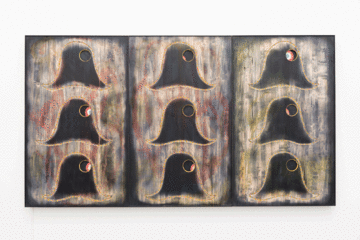
Lime wood, tint, motor
200 × 360 × 6 cm
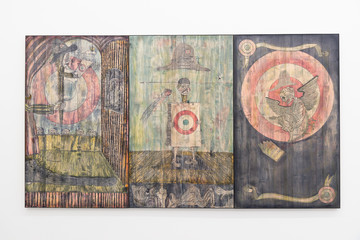
Lime wood, tint
200 x 360 x 3 cm

